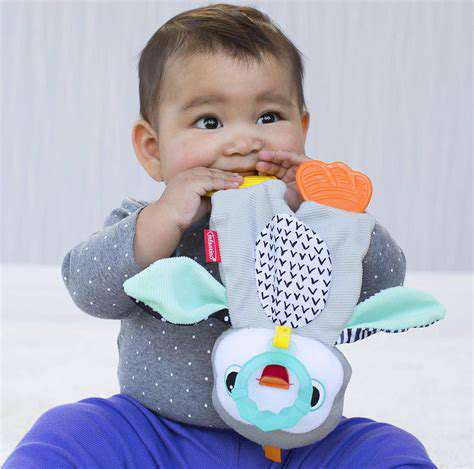Understanding and Stopping Puppy Biting
Puppies explore their world primarily through their mouths, much like human babies. This behavior stems from their natural curiosity and teething discomfort, not aggression. When a puppy nips during play, it's often an attempt to engage or communicate rather than cause harm. Understanding this distinction helps owners respond appropriately without punishing normal developmental behaviors.
Teething typically begins around 3-4 months and can last until 6-7 months. During this period, puppies experience significant gum irritation as adult teeth emerge. Providing appropriate chew toys can redirect this natural chewing instinct away from hands and furniture. Frozen washcloths or rubber teething rings offer particularly effective relief for sore gums.
The Social Aspect of Puppy Biting
In litter environments, puppies learn bite inhibition through interactions with siblings. When play becomes too rough, the bitten puppy will yelp and stop playing, teaching the biter that excessive force ends the fun. This critical socialization period between 3-14 weeks establishes lifelong communication patterns. Puppies removed from litters too early often lack these learned boundaries.
Owners can replicate this teaching method by immediately ending play when bites occur and offering appropriate toys instead. Consistency is key - every family member should respond the same way to reinforce the lesson. Positive reinforcement for gentle play proves far more effective than punishment for mistakes.
Common Triggers for Puppy Biting
Several factors can increase biting behavior:
- Overexcitement: Puppies often mouth more when overly stimulated during play
- Fatigue: Tired puppies (like tired children) frequently lose impulse control
- Attention-seeking: Some puppies learn that biting gets immediate reactions
- Teething pain: As mentioned earlier, discomfort drives chewing needs
Keeping play sessions short (5-10 minutes) and providing regular nap times in a quiet crate or bed can significantly reduce overstimulation biting. Mental stimulation through training exercises often tires puppies more effectively than physical play alone.
Teething and Sensory Exploration

The Teething Timeline
Puppies develop 28 baby teeth that begin falling out around 12-16 weeks as 42 adult teeth emerge. This transition period causes significant discomfort that manifests through increased chewing, drooling, and occasional mild fever. Understanding this natural process helps owners differentiate normal teething from potential health concerns.
During peak teething weeks, you might find tiny teeth around your home - this is completely normal. However, retained baby teeth (those that don't fall out naturally) may require veterinary extraction to prevent dental alignment issues. Regular gentle mouth inspections help monitor proper teething progression.
Sensory Learning Through Mouthing
Beyond teething, puppies use their mouths to gather information about their environment. Texture, temperature, and taste all provide critical data about objects' safety and purpose. This exploratory behavior serves an important developmental function, though it requires careful supervision and redirection.
Creating a puppy proof exploration zone with various approved textures (rubber, rope, plush) satisfies this need safely. Rotating toys maintains novelty and interest. Always supervise chewing sessions and immediately replace inappropriate items with approved alternatives.
Teaching Bite Inhibition
Effective bite inhibition training involves:
- Reacting to hard bites with a high-pitched ouch! and immediate play cessation
- Resuming play only when the puppy calms down
- Rewarding gentle mouthing with continued interaction
- Progressively lowering tolerance for any mouth pressure
Puppies typically master bite inhibition by 5-6 months with consistent training. Those missing this critical window may require professional behavior modification later. Early proper training prevents serious behavioral issues in adulthood.
Distinguishing Playful Nipping from Aggressive Biting

Body Language Cues
Playful nipping involves loose, wiggly body movements with frequent play bows (front end down, rear end up). The mouth remains open and relaxed during gentle nips. Watch for smiling expressions, wagging tails, and frequent breaks in the action - all signs of appropriate play behavior.
In contrast, aggressive biting features stiff, tense posture with direct staring. The lips may curl to reveal teeth, and the tail typically stands stiff rather than wagging loosely. These warning signs indicate genuine aggression requiring immediate professional intervention.
Play Style Differences
Healthy play involves role reversal - the puppy alternates between chasing and being chased. Bites are brief and non-injurious, often accompanied by self-handicapping (deliberately less forceful than their full capability). This mutual enjoyment and self-regulation distinguishes play from problematic behavior.
One-sided interactions where the puppy refuses to disengage or escalates despite clear signals to stop suggest developing aggression. Such cases benefit from early behaviorist consultation before patterns become ingrained.
When to Seek Help
Consult a certified professional if your puppy:
- Breaks skin regularly during play
- Growls or snaps when corrected
- Targets faces or necks
- Shows no improvement after consistent weeks of training
Remember that true aggression is rare in puppies. Most problem biting stems from normal development gone slightly off track. With patience and proper guidance, nearly all puppies develop into gentle, well-mannered adults.